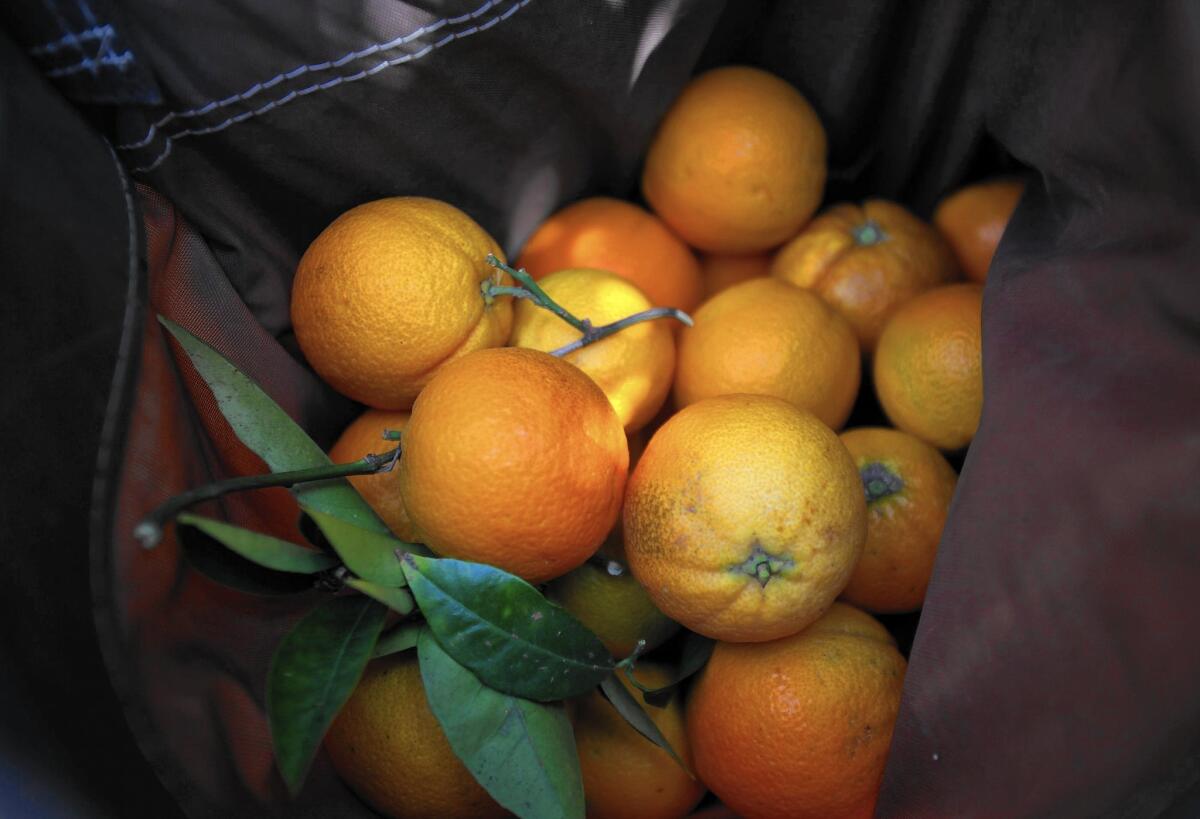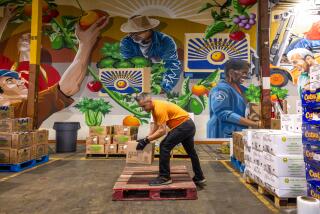Food banks ask donors to think healthful before giving

- Share via
From now through the end of the year, many churches, schools and other organizations will collect food to fill food banks and food pantries during the winter holiday season. Trouble is, one advocate says, people who mean well often could do better.
Despite all the hounding from public health agencies and doctors about the connection between food and disease, too many food banks still get and hand out too much unhealthful food, says Ruthi Solari, a San Diego clinical nutritionist who founded SuperFood Drive, a nonprofit organization that works to get more nutrient-dense products into the hands of people who rely on food banks.
The idea that if someone’s hungry any food will do is outdated, she says.
“That’s still a very prevalent sentiment,” Solari says. “We need to pause, think about it and make these small changes that make a difference.”
People might consider donating whole wheat pasta or brown rice, for example, and dried beans of all kinds are a good choice.
It is frequently reported that 1 in 6 people in the United States relies on food relief. Those people include children and parents, older people and the working poor, in addition to the homeless single people who need help. For example, Solari said, more than 400 families who live in the tony Hamptons communities on New York’s Long Island are getting food relief.
Food banks traditionally measured their success by the total pounds of food distributed. (“Soda weighs a lot,” Solari notes.) But some food banks have adopted policies of not accepting donations of soda and have worked to increase the amount of fresh and healthful food they distribute.
Erik Talkin is chief executive of the Food Bank of Santa Barbara County, which distributes more than 9 million pounds of food a year, more than half of that fresh produce, he says. His food bank doesn’t accept candy or soda and has occasionally poured soda out to recycle the donated bottles.
His food bank provides donors with a list of healthful foods, and he says there has been a significant shift toward such food in many food banks. “We see it as a positive opportunity to influence the health of a large number of people in the county,” he says.
Food banks are generally large operations that distribute food to neighborhood pantries, where it goes to those in need. Individual donors, Solari says, often can have an influence on those pantries by organizing a healthful food drive.
“We’re shifting from the mentality of just filling stomachs,” she says. “We all understand more about what we put in our bodies and how it affects our health.”
::
Ideas for food bank donations
Some ideas if you are collecting or donating food this season:
Read labels. Look for versions of products with less sugar or more whole foods. Peanut butter without additional oils or sugar, or fruit canned in water rather than syrup, are more healthful, says clinical nutritionist Ruthi Solari.
Buy products as unprocessed as possible. As an example, Solari suggests donating rolled oats rather than packets of instant oatmeal.
Solari suggests five ingredients as a tipping point on a label. If there are more, don’t buy it or donate it.
Consider donating money. Food banks, especially larger ones, have much greater purchasing power than individuals.
Consider hosting a food drive for a neighborhood pantry rather than a larger organization.
The Santa Barbara County food bank offers a list of foods to donate: www.foodbanksbc.org/give-help/donate-food/.
More to Read
Sign up for Essential California
The most important California stories and recommendations in your inbox every morning.
You may occasionally receive promotional content from the Los Angeles Times.











